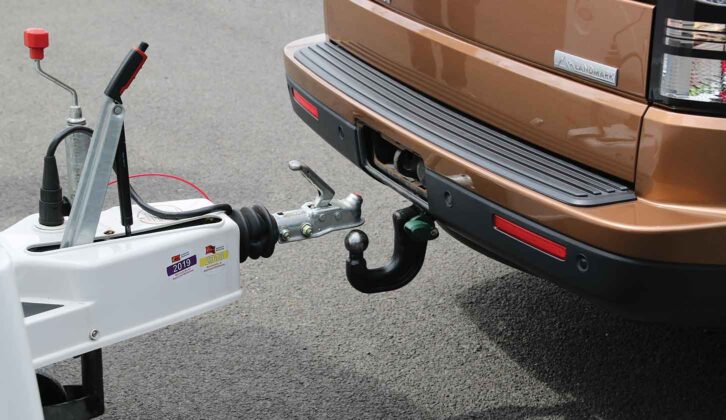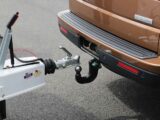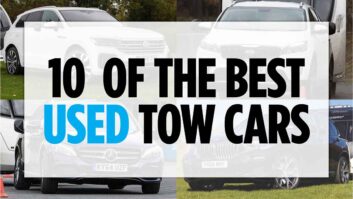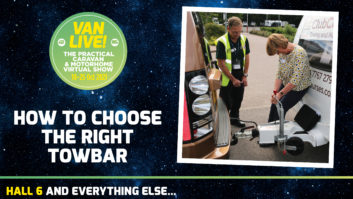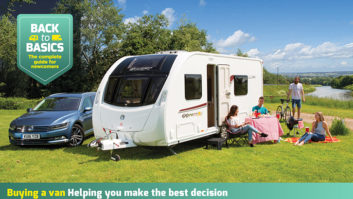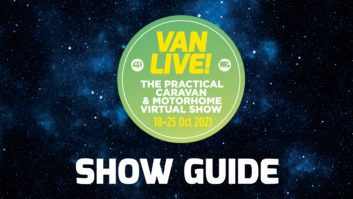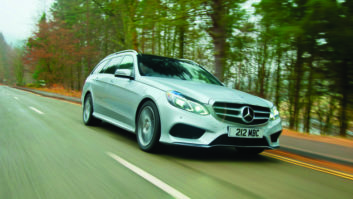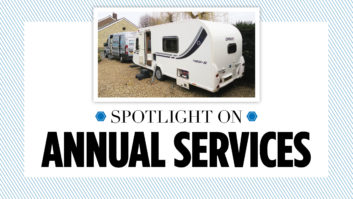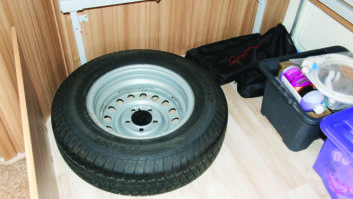It’s easy to take the humble towbar for granted. After all, every tow car has one. But it’s important to make sure that the towbar you select is compatible with your caravan’s hitch, and once you start looking, you’ll find there is a surprising variety of types, from detachable to flange towbars.
How do you make sure you choose the right towbar, and what steps should you take to ensure it is fitted correctly? Before you start thinking about the accessories that will help you enjoy a stress-free experience on the road, such as the best caravan sat nav, you’ll want to ensure you’ve got this essential piece of towing gear sorted.
It can feel confusing knowing where to start, particularly if you’re a beginner to caravanning. This guide fills you in on the towbar essentials you need to know about to help you find the one for you, explaining the difference between each type,
Types of towbar to choose from
Swan neck towbar
With a swan neck towbar, the towball on the end of the bar and the bar itself are one piece, with the curve of the bar resembling a swan’s neck. Generally, swan neck towbars are compatible with Al-Ko stabiliser heads, an important point which we’ll come back to in more detail later.
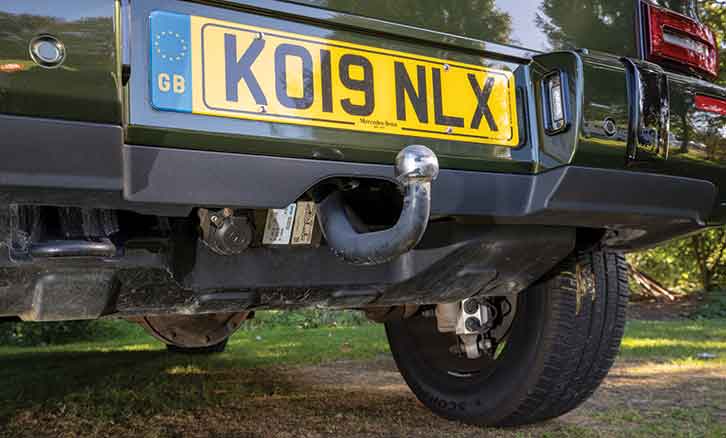
Flange towbar
You’ll find flange towbars mainly on commercial vehicles, although they are also fitted to many passenger cars. Here, the towball is bolted to the towbar, rather than being one piece.
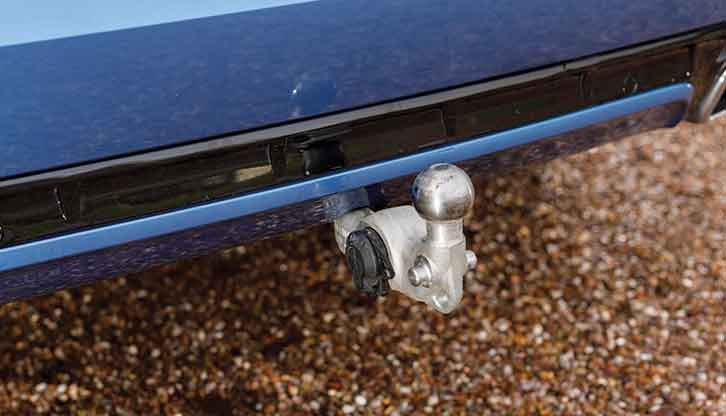
One advantage is that this can make it possible to use an accessory, such as a cycle carrier, while towing. But care is needed to make sure this kind of towbar is compatible with caravan stabilisers.
Whether you opt for a swan-neck or flange towbar, they are both available in either fixed or detachable guises.
Detachable towbars
Detachable bars might cost a little more, but they allow the towbar to be stored when not in use, rather than left open to the elements. Your shins will thank you for choosing a detachable towbar – it’s all too easy to knock your leg against a fixed towbar when loading and unloading the boot, not ideal when you’re unpacking your caravan essentials at your pitch.
Electric-swivelling towbars
Electric-swivelling towbars motor into position at the push of a button. Some will go all the way up and down, while others will need to be locked into place by hand.
These have the advantage of keeping the back of the car neat and tidy when you aren’t towing, without the faff of having to get down on your knees to fit the towbar when you’re hitching up a caravan.
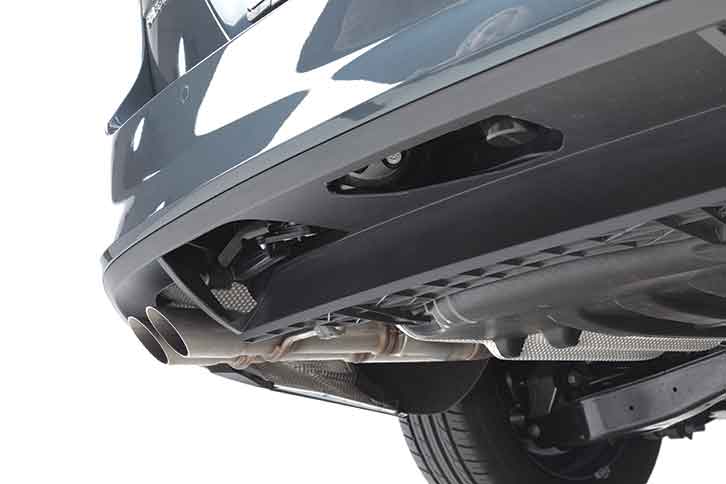
This type of bar is typically a factory-fit option, rather than an accessory that can be fitted to a vehicle later.
Which type of towbar is best?
That depends on your priorities. There’s no doubt that a retractable towbar makes for a very neat installation.
There are no issues with storing the towbar, and the good news for owners of the best caravan tow cars is that the vehicle’s looks are unaffected whenever the towbar isn’t needed.
However, a retractable towbar will be a more expensive option. There are some aftermarket retractable towbars around, such as the Oris E3, but you can expect to pay upwards of £1000 for this type of towbar and electrics.
Care is needed if you choose a flange towbar. Most caravans sold in the UK in recent years have an Al-Ko chassis, fitted with a stabiliser hitch. This needs a certain amount of clearance to be sure there’s no risk of the hitch fouling on the towbar or the car’s bumper. A flange towbar could lack the necessary clearance.
Spacing plates, which move the towball further from the flange, may or may not be sufficient to give enough room.
Such clearance is much less likely to be a problem with a swan neck towbar. These generally sit well clear of the car’s back bumper and have a vertical section of bar directly below the ball, leaving plenty of space around the hitch. However, a swan neck towbar is usually going to be slightly more expensive than a flange towbar.
Fixed or detachable? For a vehicle that’s going to be towing almost every day, we’d go for a fixed towbar. For the majority of caravanners, however, towing isn’t a daily activity, so we’d choose a detachable.
Picking a detachable towbar might cost a little more, but your shins will thank you – accidentally kicking a towbar as you load the boot with shopping really hurts!
For the best balance of practicality and convenience, a detachable swan neck is a good choice for most caravanners.
Do towballs need to meet a legal standard?
Yes. Unless your car was first used before 1 August 1998, any towbar must be ‘type approved’. This means that it meets EU regulations and is designed for your car. There should be a label on the towbar with an approval number and the details of the vehicles for which it has been approved.
Assuming that your caravan has an Al-Ko chassis, it will also need an Al-Ko compatible towball. This means there is enough space around the ball to allow an Al-Ko stabiliser hitch to articulate freely.
As part of the type approval process, towbar manufacturers will ensure that the towball sits at the correct height. Under UNECE Regulation 55, this is between 350mm and 420mm from the centre of the towball to the ground when the vehicle is loaded.
Finding a fitter
With such a safety-critical component, we would always strongly recommend employing a professional fitter, rather than attempting to fit the towbar yourself.
The National Trailer and Towing Association has a directory of approved towbar fitters, who must meet the required standard for customer service and quality of work.
Check the car can tow before you buy
Whether you’re thinking of buying a new or used car, make sure it has been approved to tow, and that it’s heavy enough for matching the car to a caravan.
As most readers will know, both major caravanning clubs recommend towing a caravan weighing no more than 85% of the car’s kerbweight, especially if you are new to towing.
If you are buying a new car, you should be able to specify either factory-fit towing gear, or a dealer-fit accessory. Some cars have higher towing limits with factory-fit towing gear, as extra cooling is fitted on the production line to cope with the demands of towing.
When you are shopping for a used tow car, check the VIN plate for the car’s Gross Vehicle Weight and Gross Train Weight.
These will be the first and second weights of the four you will find listed. If the second figure is blank, the car hasn’t been approved for towing.
Be aware that most recent Škoda models aren’t approved for towing, unless they leave the factory with either towbar preparation or factory-fit towing gear – so be particularly careful if you are considering a used tow car of this brand
Towbar electrics
As well as the towbar, you’ll need an electric socket to supply power to the caravan.
Caravans have been supplied with 13-pin electrics since 2008, although if you’re buying a used caravan which is older, it will have seven-pin connections. Adapters are available if your car and van don’t use the same plug system.
Some electrical kits are ‘universal’ – they should work with the majority of cars. But we’d always recommend using a vehicle-specific kit.
With this type of towing electrics, the car’s systems are aware a trailer has been attached, which turns on trailer stability control (if fitted) and should disable any driver assistance systems that would be confused by the presence of the van, such as rear parking sensors and blind-spot monitoring.
Check that the electrics will power the caravan’s fridge and leisure battery (see: the best caravan leisure battery if you are after one), as well as the road lights.
What’s the difference between universal and dedicated wiring kits?
A universal kit should work with any car, while a dedicated wiring kit is intended for a specific make and model.
The advantage of a dedicated wiring kit is that it will ‘talk’ to the car’s ECU (its electronic brain). This means the car will know that it is pulling a trailer and react accordingly. For example, it should disable or alter the function of certain driver aids, such as a blind-spot assistant or rear parking sensors, that would otherwise react to the caravan.
It will also activate the car’s trailer stability control, if such a system is fitted.
The final word on caravan towbars
Newcomers to towing may be surprised by the variety of towbars and electrics. It boils down to finding a towbar that suits your needs, your car and your caravan. Once you understand the pros and cons of the different types, picking the right towbar and electrics should be straightforward.
Something else you’re going to want to get right is the maintenance of your tourer – one area you’re not going to want is the tyres, with tyre failure responsible for more tourer accidents than anything else. Our guide to caravan tyre care talks you through what you can do to keep them in tip-top condition.
Future Publishing Limited, the publisher of Practical Caravan, provides the information in this article in good faith and makes no representation as to its completeness or accuracy. Individuals carrying out the instructions do so at their own risk and must exercise their independent judgement in determining the appropriateness of the advice to their circumstances and their own skill level. Individuals should take appropriate safety precautions and be aware of the risk of electrocution when dealing with electrical products. To the fullest extent permitted by law, neither Future nor its employees or agents shall have any liability in connection with the use of this information. You should check that any van warranty will not be affected before proceeding with DIY projects.
If you’ve enjoyed reading this article, why not get the latest news, reviews and features delivered direct to your door or inbox every month. Take advantage of our brilliant Practical Caravan magazine SUBSCRIBERS’ OFFER and SIGN UP TO OUR NEWSLETTER for regular weekly updates on all things caravan related
